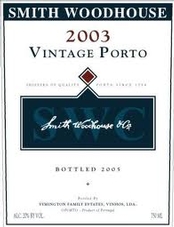To every wine there is a season. Perhaps that is a bit of an overstatement, but for fortified port wines, time and place are everything.
On a cold, wintry night, few beverages warm body and soul as well as a glass of port by the fire. And at 18 to 20 percent alcohol, which is typical for port, the log on the fire is optional. There is plenty of heat in this sweet libation.
 Now that the Port "season" is upon us, this would seem to be the time to clarify a few of the terms related to port that perennially mystify so many wine enthusiasts. First and foremost is the term port itself. Port is a style of wine that is made to be sweet (though there are dry white ports) and served with cheese or dessert, usually after dinner. Port-style wines are produced the world over, but true port is made in the Douro Valley region of Portugal from indigenous grape varieties.
Now that the Port "season" is upon us, this would seem to be the time to clarify a few of the terms related to port that perennially mystify so many wine enthusiasts. First and foremost is the term port itself. Port is a style of wine that is made to be sweet (though there are dry white ports) and served with cheese or dessert, usually after dinner. Port-style wines are produced the world over, but true port is made in the Douro Valley region of Portugal from indigenous grape varieties.
Tawny port is a port that is subjected to extended aging in barrel, where it loses color and takes on a tawny shade of brown, or caramel. Tawny ports also lose their primary fruit aromas the longer they age, evolving toward aromas of caramel, candied fruit and nuts. Tawny port is especially good with desserts that are flavored with brown spices such as nutmeg, cinnamon and ginger. The most common tawny ports you will come across are those that have been aged an average of 10 or 20 years prior to bottling.
Ruby ports are those that see some time in barrel, but are aged primarily in the bottle. The top of the line in this category is vintage port. The great port houses only "declare" a vintage in the very best years. Ruby port made in non-vintage years are blended into "vintage character" ports such as Fonseca Bin 27 or Graham’s Six Grapes.
Vintage-character ports sell for a fraction of the price of vintage ports, but they represent tremendous value because they are delicious. The major difference between vintage character and vintage is structural — vintage Ports are capable of improving with age over decades of cellaring, vintage-character ports are softer and fleshier when young and meant to be drunk upon release.
Late bottled vintage port, or LBV, also represents tremendous value, for these are ruby ports that while they fell short of the vintage designation, they are a cut above vintage character. These wines are aged up to four years in barrel and meant to be drunk within a few years of release. Because they don’t combine multiple vintages, as vintage-character ports do, they do carry the year of production on the label, which causes confusion to some consumers who think they are purchasing a vintage port. Late bottled vintage will be clearly stated on an LBV label.
Vintage port is the ultimate in the world of port and thus the most expensive, generally starting at about $50 a bottle but often topping $100 when the vintage is deemed extraordinary. Vintage ports require several years in bottle to tame the tannins. I typically don’t open my vintage ports until they are at least 10 years old. They are capable of holding up 40 to 50 years in the exceptional vintages.
When drinking port, always remember they are big, complex wines, so they need to be served in glasses that allow the wines to aerate sufficiently to bring out the full range of aromas and flavors, as well as soften the tannins if the wine is being served young.
And remember that at 20 percent alcohol by volume, a little bit of port goes a long way, or at least until the chill is gone.
8
